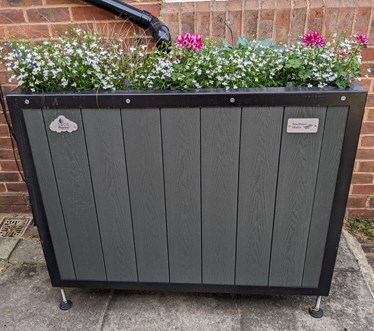As the CEO of Southern Water, I’ve heard our customers concerns and we take our impact on the environment seriously.
We have a long-term strategy to 2050 that will restore and protect our regions’ rivers and coastal habitats for generations to come. The first step is to get our performance back on track which we’re able to do thanks to additional investment from our majority shareholders, funds managed by Macquarie Asset Management. Following this reset, we can focus on delivering the improvements customers want. This is outlined in our Business Plan for 2025-2030, which includes the single largest investment in our environment to date of £3.3 billion.
Part of this will be to address storm overflows. I know our customers want us to stop storm overflows, but it’s not that simple. These emergency outlets are the last line of defence to stop homes and communities from being flooded when the sewer system becomes overwhelmed by large volumes of rain or groundwater entering the network. Something we’re seeing more frequently due to erratic weather caused by climate change.
We cannot simply switch storm overflows off. But by tackling the root cause, slowing the flow of rainwater going into the combined sewer, whilst increasing capacity of our network, we can reduce their use.
Our Clean Rivers and Seas Plan
We have almost 1,000 storm overflows in our region and 50% of these are already hitting the government’s 2050 target, releasing 10 times or less a year. So, today we’ve published our Clean Rivers and Seas Plan, a blueprint for how we’ll address the remaining overflows. By 2035, 75% of our high priority overflows will be meeting the government’s 2050 target, therefore reducing spills by an average of 8,000 a year. This represents an 81% reduction in spills in bathing water areas by 2035, and 80% reduction in releases in shellfish areas.
Our plan includes a record investment of £1.5 billion between 2025 and 2035 to deliver long-term solutions that get to the root cause of storm overflow use, combining solutions that work in harmony with our natural world with infrastructure improvements - not just building more concrete storm tanks.
The first phase of this plan will be delivered between 2025 and 2030 and will see an investment of £700million to focus on areas such as shellfish and bathing waters, and environmentally sensitive sites. This means by 2030, we’ll reduce spills by 49% in bathing water areas and 50% in shellfish areas. This equates to a reduction of approximately 3,000 spills from our overflows a year.
We have already made progress
Our ‘Clean Rivers and Seas Task Force’ - a team of environmental scientists, engineers and industry experts - are already leading the way. We have already invested £35million in testing nature-based solutions across the South-East. We’re talking about raingardens, wetlands, tree planting schemes, and the ingenious deployment of water butts. Its sounds simple, but it’s effective. The results are already astonishing – a staggering 70% reduction in spills at the nearest storm outfall on the Isle of Wight after we introduced water butts to most of the houses on a nearby street. These ‘Pathfinder’ projects show that we’re on the right track.
Examples of "slow the flow" solutions we have installed in our communities already.
Below: water butt trial in Whitstable. 
Below: sustainable drainage planter at a school on the Isle of Wight.
 Collaboration is key
Collaboration is key
But we can't navigate this transformation alone. Rainwater from rooftops and roadways forms the bulk of our sewage system's intake. We're calling on our customers and local authorities to work with us and adopt solutions like water butts or sustainable drainage systems, to channel rainwater safely and slowly back into the environment. Together, we can go faster and further, protecting our communities and our environment.
However, we need to strike a balance between delivering the changes our customers want and minimising the impact on their bills. Our majority shareholders have provided additional investment to get our performance back on track, and we haven’t paid any external dividends since 2017 to ensure we’re investing as much as possible in our network. But, to tackle storm overflows and deliver the change our customers want, we need to fundamentally redesign our system and introduce new measures in our communities and to fund this we need to increase customer bills which will be done in stages over time.
I know this will be difficult for some, especially for those grappling with the rising cost of living. So, we have increased the amount of support options available to our customers. This includes more than doubling the extent of our social tariff support which offers 45% off bills, quadrupling the value of our Hardship Fund and expanding the reach of our Priority Services Register.
Change of this magnitude is not going to be as fast as we would all like or hope for. So, we’re asking customers to view our plans and tell us their thoughts on our timescales and together we can build a sustainable water future.
To view our plan and share feedback please visit: southernwater.co.uk/water-for-life/clean-rivers-and-seas-plan/map
Thank you.
Lawrence Gosden
Chief Executive Officer
Southern Water
